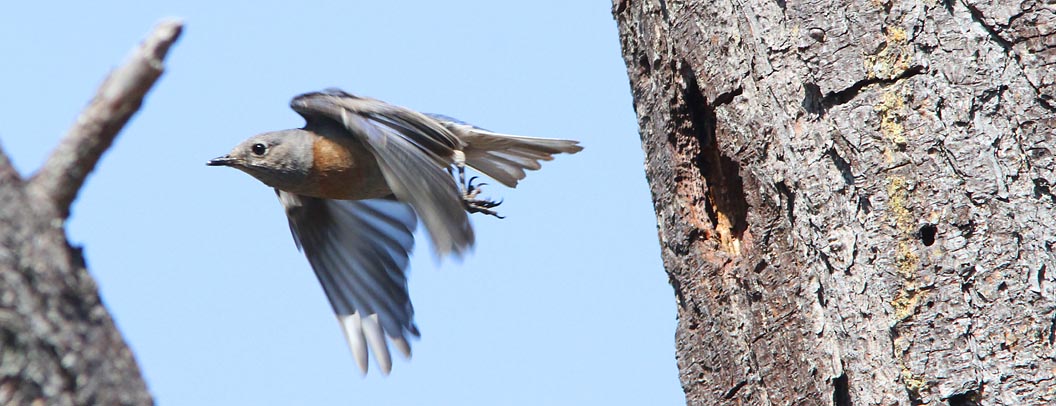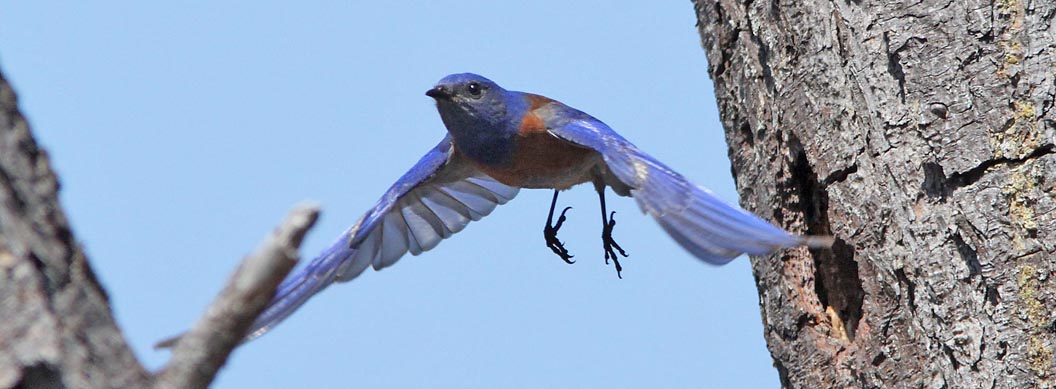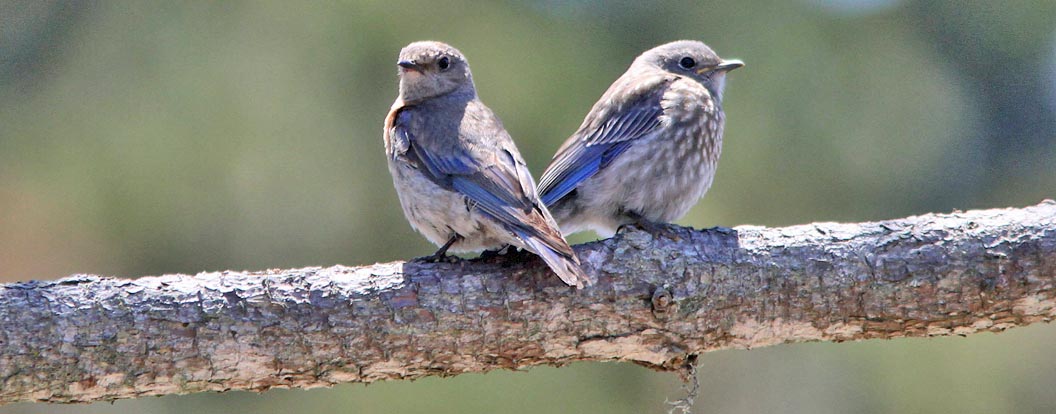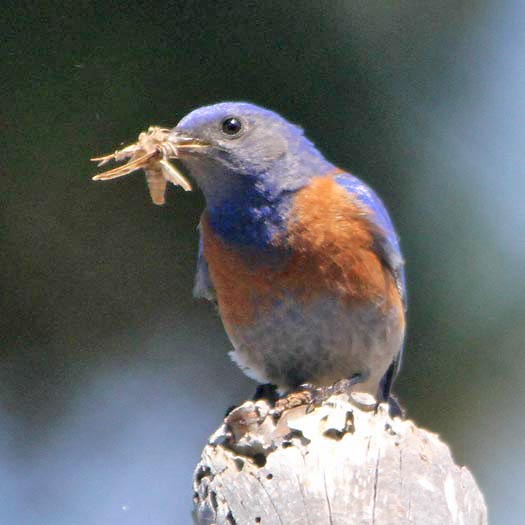a web page by Don Roberson |
 |
Western Bluebird is a fairly common and widespread bird in Monterey County, preferring open oak woodland and Ponderosa pine habitats. It was recorded in 220 of 385 breeding bird atlas blocks (57% of atlas blocks), and nesting was confirmed in a majority of them (Roberson & Tenney 1993). The Breeding Bird Atlas project, found it quite scarce in the Salinas Valley floor and along the Big Sur coast, and entirely absent from Pt. Sur north to the Santa Cruz County line in coastal lowlands. None were found on the Monterey Peninsula, where it is even scarce as a winter visitor or vagrant (Roberson 2002). In recent years, though, it seems to be becoming more regular on the Peninsula in fall and winter, and has been recorded in Pacific Grove on the Christmas Bird Count. Still, it was quite a surprise when Rita Carratello and I found a pair of Western Bluebird in small grove of Monterey pines, adjacent to coastal scrub, in Pacific Grove on 14 Apr 2012. The pair seemed to be investigating a dead Monterey Pine snag (several pine snags were standing), so we planned to go back to check a couple of weeks later. We did so on 5 May and found that the pair were actively feeding young in a nest hole in one of the pine snags (all photos this page). We could not hear the babies so we presume that they are very young. The site is actually on private government property, and separated from the public street by a fence, so this does provide the pair with some privacy. There are breeding European Starlings nearby, so it is perhaps fortunate that this nest hole was vacant. |
||
|
||
 |
||
Based on specimens, Western Bluebirds were regularly recorded in Pacific Grove between 1892-1908 (at least 9 specimens at Calif. Academy of Sciences, including "imm" birds in June 1908, which were likely fledglings collected within breeding territories). There is an egg set from Pacific Grove, collected by Henry H. Heath on 5 May 1916, at Museum of Vertebrate Zoology, U.C. Berkeley. That is the last actual evidence of breeding in Pacific Grove. Ironically, that was exactly 96 years before the day we confirmed current nesting here. At Pt. Lobos, Western Bluebirds were regular breeders to at least 1936 (see Roberson & Tenney 1993), and Laidlaw Williams watched a pair visiting a potential nest site at Pt. Lobos on 4 March 1945. It is possible that small numbers of bluebirds were still in Pacific Grove then as well, but I am unaware of any actual evidence to support that supposition. As noted above, the last actual evidence of local nesting in P.G. goes back 96 years. During the last 50+ years, habitats have dramatically changed in Pacific Grove. Coastal dunes and live oak forests were developed into housing and a golf course, and Monterey Pines grew to a climax forest over much of the town. The arrival of European Starlings in the 1950s are believed to be the cause of the extirpation of small local colonies of Purple Martin in that decade (see Roberson & Tenney 1993, Roberson 2002), and may well have excluded bluebirds from potential nest holes as well. Starling populations on the Monterey Peninsula continue to be high and continue to impact hole-nesting species such as woodpeckers, swallows, and, presumably, bluebirds. For the moment, though, let's wish this pair good luck in their effort to raise a local brood of bluebirds! More news later . . . |
||
 |
||
UPDATE: On 25 May, both parents were feeding the youngster in the nest hole. On 26 May, all the bluebirds were gone. Had the young fledged? Or had the nest failed? On 27 May, a search found a pair of adults a quarter-mile south along Asilomar Blvd., checking out a nest hole. Did our nest fail and the pair thinking about renested? UPDATE: On 17 June, Rita found the pair of bluebirds feeding a fledgling at the original site, but moving around over a couple of block area [female and youngster below]. The fledgling still had yellow gular edges but was full-sized and wearing the spotted juvenal plumage. Both parents were with the youngster, but only the female was seen to feed it. According to Guinan et al. (2008), fledglings should generally be independent within two weeks of fledging. By 17 June, this youngster had been out of the nest for just over 3 weeks (23 or 24 days). |
||
 |
||
Photos: All photos © Don Roberson, all rights reserved. Literature cited:
|

